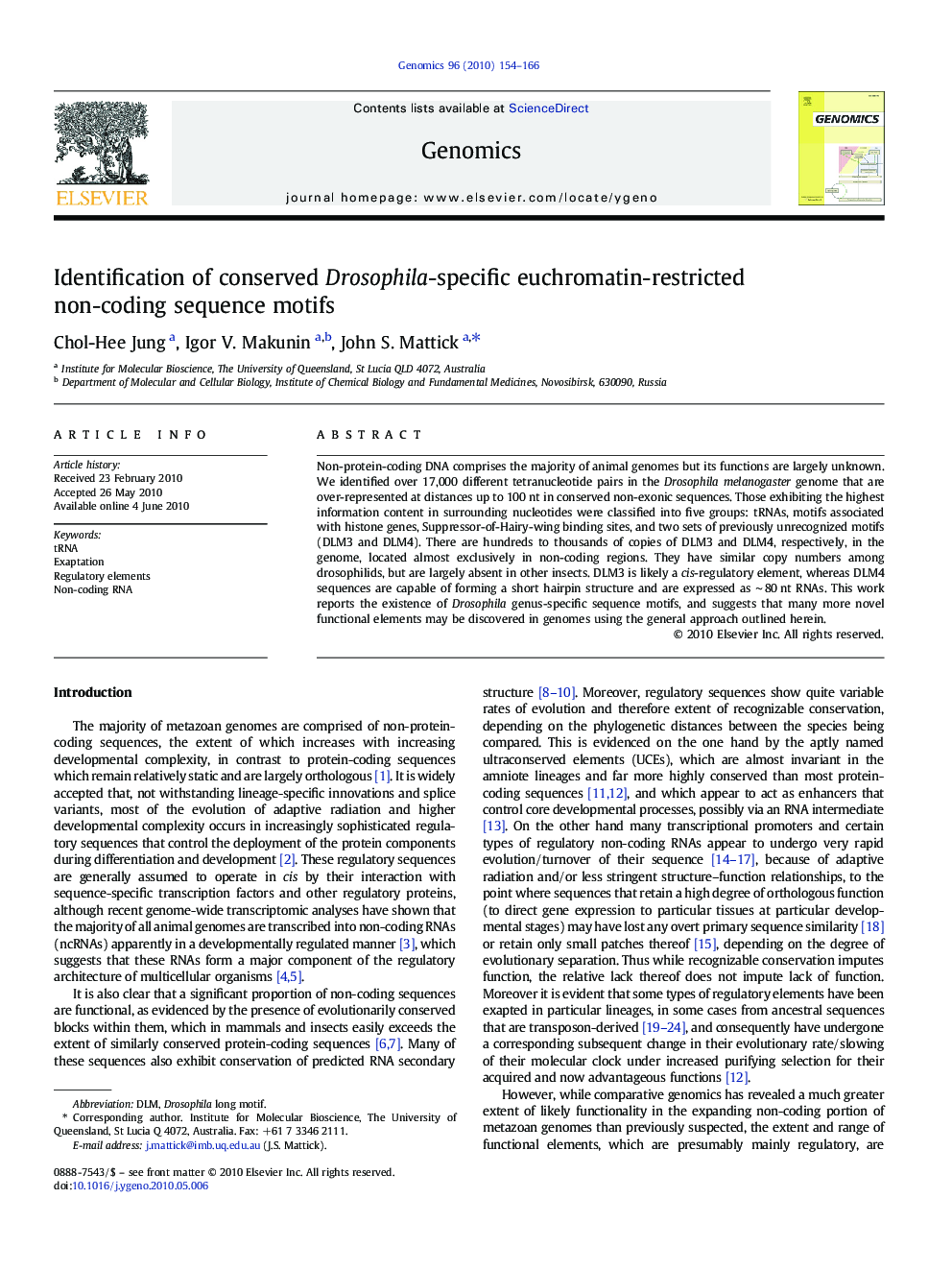| Article ID | Journal | Published Year | Pages | File Type |
|---|---|---|---|---|
| 2821201 | Genomics | 2010 | 13 Pages |
Non-protein-coding DNA comprises the majority of animal genomes but its functions are largely unknown. We identified over 17,000 different tetranucleotide pairs in the Drosophila melanogaster genome that are over-represented at distances up to 100 nt in conserved non-exonic sequences. Those exhibiting the highest information content in surrounding nucleotides were classified into five groups: tRNAs, motifs associated with histone genes, Suppressor-of-Hairy-wing binding sites, and two sets of previously unrecognized motifs (DLM3 and DLM4). There are hundreds to thousands of copies of DLM3 and DLM4, respectively, in the genome, located almost exclusively in non-coding regions. They have similar copy numbers among drosophilids, but are largely absent in other insects. DLM3 is likely a cis-regulatory element, whereas DLM4 sequences are capable of forming a short hairpin structure and are expressed as ∼ 80 nt RNAs. This work reports the existence of Drosophila genus-specific sequence motifs, and suggests that many more novel functional elements may be discovered in genomes using the general approach outlined herein.
